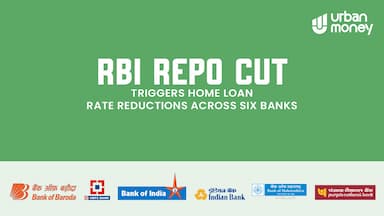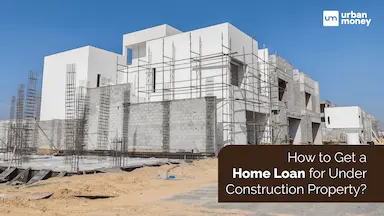20 Lakh Home Loan EMI & Interest Rate
A ₹20 lakh home loan, a popular choice among first-time buyers, young couples, solo investors, and those seeking to manage their expenses, offers a sensible path to homeownership. It’s a manageable amount that allows for relatively light monthly instalments, making it easier to handle other financial responsibilities. For many, this amount provides just enough to get started without overburdening their budget.
- Personalized Home Loan solutions
- Expert guidance
- Application assistance
- Credit score discussion
- Home Loan Interest rate comparison
20 Lakh Home Loan EMI Calculator
- 5 Lac
- 20 Cr
- 5
- 30
- 6
- 20
Monthly Loan EMI
Payment Breakdown:
Principal Amount
₹20,00,000
Interest Payable
Total Amount Payable
Table of Content


Last Updated: 10 December 2025
Features of 20 Lakh Home Loan
- Loan Tenure: Today, most banks as well as non-banking financial institutions offer flexible repayment tenures that can range anywhere from 15 to 30 years.
- Interest Types: Borrowers can typically choose between a fixed-rate of interest, where the rate remains constant throughout the loan period, or a floating rate, which varies based on market conditions.
- Loan-to-Value (LTV) Ratio: This represents the amount of the loan against the actual value of the property. For a 20 lakh home loan, the LTV ratio might vary, but it’s often up to 80-90% of the property’s value.
- Eligibility Criteria: Lenders look at age, income, credit score, and other financial liabilities to determine eligibility.
- Prepayment and Foreclosure: Some financial institutions allow customers to pay off the loan ahead of schedule without incurring any kind of penalty.
- Balance Transfer: There are many banks as well as NBFCs that offer their customers the feature of home loan balance transfer. With this, the borrowers are able to shift their loans to another lender who may be offering a lower interest rate.
Benefits of 20 Lakh Home Loan
- Affordability: A 20 lakh home loan EMI targets a segment of properties that might be more affordable, making it easier for middle-class families to own homes.
- Tax Benefits: Under various sections of the Income Tax Act, borrowers can claim deductions on both principal and interest components of the home loan, resulting in significant tax savings.
- Building Credit Score: Timely repayment of the home loan can enhance one’s credit score, which is beneficial for future financial endeavours.
- Flexible Repayment: Many lenders offer flexibility in repayment, allowing for changes in EMI amounts or repayment methods depending on the borrower’s financial situation.
- Add-on Services: Some lenders bundle additional services like property search assistance, legal consulting, or even discounted insurance premiums with the loan.
- Increased Liquidity: By taking a home loan, you can retain your savings for emergencies or other investment opportunities, thus increasing financial liquidity.
- Asset Creation: A home is not just a living space but also an appreciating asset over time. With a 20 lakh home loan EMI, one can step onto the property ladder and potentially witness asset appreciation over the years.
What is The Eligibility Criteria For 20 Lakh Home Loan?
Here are the basic eligibility criteria for availing a 20 lakh home loan.
- Minimum Age: Usually, the borrower needs to be at least 21 years old at the time of loan commencement.
- Maximum Age: The age at which the loan should be fully repaid typically ranges from 60 to 65 years, depending on the lender.
- Employment Status: Salaried Individuals: Should have a regular source of income and be employed with a recognised organisation for a specified number of years (typically 2-3 years).
- Self-employed Individuals: Should show proof of business continuity, usually for a minimum of 3-5 years.
- Income Level: The minimum monthly or annual income level may be specified to ensure the borrower can afford the loan repayments. This threshold varies based on cities (metro vs. non-metro) and the lender’s policies.
- Credit Score: A good credit score (generally 750 and above) is preferred as it indicates the borrower’s creditworthiness. Each country has its own credit rating agency, like CIBIL in India.
- Existing Liabilities: Your current financial obligations (like other loans or credit card debts) are assessed. Lenders ensure that your total monthly obligations, including the new loan EMI, don’t exceed a certain percentage of your monthly income.
- Property Details: The property to be purchased should have valid legal documentation. Lenders might also prefer properties within certain areas or of a particular type.
- Work Experience: For salaried individuals, total years of work experience and years of experience in the current job might be considered.
- Business Stability: For self-employed individuals, the stability and turnover of the business play a crucial role.
- Resident Status: Lenders often have different criteria for residents, non-resident individuals, and foreign nationals.
- Co-applicants: Some lenders may require or allow co-applicants, which can also influence the loan amount’s eligibility.
- Documentation: While not an eligibility criterion per se, proper documentation supporting income, identity, age, property details, etc. is essential.
What are The Factors Affecting 20 Lakh Home Loan EMI?
The following factors affect the Rs. 20 lakh home loan EMI:
- Loan Amount: The higher the loan amount, the higher the EMI, assuming all other factors remain constant. For example, the EMI for a 20 lakh loan would be significantly less than that for a 50 lakh loan, given the same tenure and interest rate. You can use an housing loan EMI calculator to compare different loan amounts and their respective EMIs.
- Interest Rate: A higher interest rate means a higher EMI. For instance, a small difference in interest rate, say between 7% and 8%, can lead to a significant change in the EMI over a 20-year loan tenure.
- Loan Tenure: A longer tenure means a lower EMI as the principal is spread out over more months. Conversely, a shorter tenure results in a higher EMI. For example, the EMI for a 20-year loan would be lower than that for a 10-year loan, assuming the same loan amount and interest rate.
- Type of Interest Rate: With fixed rates, the EMI remains constant, making it easier to budget. With floating rates, the EMI can vary, increasing if rates rise and decreasing if rates drop. However, it’s worth noting that floating rates might start lower than fixed rates but come with the uncertainty of market fluctuations.
- Prepayments: Prepayments reduce the outstanding principal amount. Depending on the lender’s terms and conditions, this can either reduce the EMI amount for the remaining tenure or reduce the total number of EMIs, keeping the EMI amount constant.
Home Loan EMIs Based on Different Budgets
What Types of Documents Required for Availing 20 Lakh Home Loan?
The following documents are required for availing a 20 lakh home loan EMI:
For Identity and Legal Status
- Passport-size photographs
Proof of Identity
- Passport
- Voter ID card
- Driving licence
- Aadhaar card (or equivalent ID in other countries)
- PAN card (or other tax identification numbers)
For Income Proof
Salaried Individuals
- Salary slips for the last 3-6 months.
- Income Tax Return (ITR) or Form 16 for the last 2-3 years.
- Employment certificate or job continuation proof.
- Bank statements for the last 6 months show salary credits.
Self-Employed Individuals
- ITR for the last 2-3 years.
- Balance sheet and profit and loss statement for the last 2-3 years, certified by a Chartered Accountant.
- Business licence or registration certificate.
- Bank statements for the last 6 months to a year.
For Property Details
- Copy of the property title deed.
- No Objection Certificates (NOC) from relevant authorities, if applicable.
- Property tax receipts.
- Copy of the property’s approved plan.
- Estimate of the cost of construction/renovation (in case of home construction or renovation loans).
- Sale agreement or any other agreement with the builder or developer.
For Address Proof
- Passport
- Voter ID card
- Driving licence
- Aadhaar card (or equivalent ID in other countries)
- Utility bills (like electricity or water bills) from the last 3 months
Additional Documents (if applicable)
- Details of other ongoing loans, if any, like car loans, personal loans, etc
- For co-applicants, the same set of documents would typically be needed
- In case of a balance transfer from another lender, a statement from the existing lender showing the outstanding loan amount, EMIs paid, and other relevant details
What are The Processing Fees & Other Charges For 20 Lakh Home Loan?
Here’s a breakdown of common fees and charges required for a home loan, using the context of a 20 lakh home loan as an example:
- Processing Fee: Often a percentage of the loan amount, it can range anywhere from 0.25% to 1% (or more) of the loan amount. For a 20 lakh loan, this could be between ₹5,000 to ₹20,000. Some banks may have a minimum or maximum cap on this fee.
- Loan Application Fee: This is usually a fixed amount, varying from bank to bank.
- Prepayment Charges: Many banks don’t charge prepayment fees for individual borrowers on floating rate loans. However, fixed-rate loans might come with prepayment penalties, typically ranging from 2% to 4% of the outstanding amount.
- Late Payment Fee: This could be a fixed fee or a percentage of the EMI, varying among lenders.
- Loan Statement Charges: Some banks offer this for free, while others might charge a nominal fee.
- Conversion Fee: Typically a percentage of the outstanding loan amount.
- Legal Fee: This is usually a fixed amount and varies depending on the complexity of the scrutiny.
- Technical Evaluation Fee: A fixed amount, but the fee can vary based on the property’s size and the loan amount.
- GST: An 18% GST is payable over and above the processing charges and other home loan-related services provided by the bank.
- Memorandum of Deposit (MoD) Charges: A borrower has to pay a MoD charge of 01%-0.5% of the loan amount to successfully transfer the property deeds to the bank.
Explore ₹20 Lakh Home Loan from Top Banks
What is the EMI for 20 lakh Home loan for 5 years?
The following table showcases the EMI for 20 lakh home loan for 5 years at 8.5% p.a interest rate.
| Loan Amount | Rs. 20 Lakhs |
| Rate of Interest | 8.50% |
| Loan Tenure | 5 Years |
| EMI | Rs. 41,033 |
| Interest Payable | Rs. 4,61,980 |
| Total Amount Payable | Rs. 24,61,980 |
What is the EMI for 20 lakh Home loan for 10 years?
The following table showcases the EMI for 20 lakh home loan for 10 years at 8.5% p.a interest rate.
| Loan Amount | Rs. 20 Lakhs |
| Rate of Interest | 8.50% |
| Loan Tenure | 10 Years |
| EMI | Rs. 24,797 |
| Interest Payable | Rs. 9,75,640 |
| Total Amount Payable | Rs. 29,75,640 |
What is the EMI for 20 lakh Home loan for 15 years?
The following table showcases the EMI for 20 lakh home loan for 15 years at 8.5% p.a interest rate.
| Loan Amount | Rs. 20 Lakhs |
| Rate of Interest | 8.50% |
| Loan Tenure | 15 Years |
| EMI | Rs. 19,695 |
| Interest Payable | Rs. 15,45,100 |
| Total Amount Payable | Rs. 35,45,100 |
What is the EMI for 20 lakh Home loan for 20 years?
The following table showcases the EMI for 20 lakh home loan for 20 years at 8.5% p.a interest rate.
| Loan Amount | Rs. 20 Lakhs |
| Rate of Interest | 8.50% |
| Loan Tenure | 20 Years |
| EMI | Rs. 17,356 |
| Interest Payable | Rs. 21,65,440 |
| Total Amount Payable | Rs. 41,65,440 |
What is the EMI for 20 lakh Home loan for 25 years?
The following table showcases the EMI for 20 lakh home loan for 25 years at 8.5% p.a interest rate.
| Loan Amount | Rs. 20 Lakhs |
| Rate of Interest | 8.50% |
| Loan Tenure | 25 Years |
| EMI | Rs. 16,105 |
| Interest Payable | Rs. 28,31,500 |
| Total Amount Payable | Rs. 48,31,500 |
What is the EMI for 20 lakh Home loan for 30 years?
The following table showcases the EMI for 20 lakh home loan for 30 years at 8.5% p.a interest rate.
| Loan Amount | Rs. 20 Lakhs |
| Rate of Interest | 8.50% |
| Loan Tenure | 30 Years |
| EMI | Rs. 15,378 |
| Interest Payable | Rs. 35,36,080 |
| Total Amount Payable | Rs. 55,36,080 |
Home Loans That Empower Your Dreams
By Professions
By Property
By CIBIL Score
By Salary
By Other
What Are The Key Points to Consider while Taking 20 Lakh Home Loan?
- Assess Your Financial Health: Before applying, evaluate your current financial situation. Ensure that your income can comfortably handle the monthly EMI, along with other ongoing expenses and any unexpected costs.
- Shop Around: Different banks or financial institutions offer varying interest rates and terms. Compare multiple options before settling on one to ensure you’re getting the best deal.
- Check for Hidden Charges: Beyond the interest rate, be aware of processing fees, prepayment penalties, and other hidden costs. Understand all charges before signing the agreement.
- Opt for the Right Interest Rate Type: Decide between a fixed or floating interest rate based on your risk appetite and market conditions. A fixed rate means consistent EMIs, while a floating rate may vary based on market fluctuations.
- Shorter Tenure vs. Manageable EMI: During a shorter loan tenure, you will need to pay off your loan quickly and with a lower interest rate. However, owing to the short tenure, the amount of your monthly EMI will be on the higher side. Thus, it needs to be determined by the customer if they want to clear their EMIs at a fast pace or want an EMI with a lower monthly burden.
- Check Prepayment Flexibility: It is important to opt for a loan that allows the borrower to make a lower prepayment and incur minimal charges. This gives the borrowers a certain amount of flexibility to pay off their loan early on with minimal hassle.
- Read T&Cs: It is very important on the part of the borrower to thoroughly read and understand all the terms and conditions. One should look for any suspicious clauses pertaining to penalties, defaults, or changes in interest rates.
- Maintain a Good Credit Score: Maintaining a healthy credit score will help the borrower get relatively good loan terms and attractive interest rates.
- Ensure Proper Documentation: Keeping your documents in order can speed up the loan approval process. Also, it ensures that all the property-related documents are clear and without any kind of dispute.
- Seek Expert Advice: If, as a customer, you are unsure about anything, don’t hesitate to consult a financial advisor or a home loan expert. They will be able to provide you with proper guidance.
- Avoid Too Many Applications: Every time you apply for a loan, it’s recorded in your credit history. Multiple rejections can negatively impact your credit score. It’s best to research thoroughly and apply only when you’re confident.
Tips to Minimise Your 20 Lakh Home Loan EMI
Here are the basic tips to minimise your 20 lakh home loan EMI:
- Opt for a Longer Tenure: Increasing the tenure of your loan will reduce your monthly EMI, though you’ll end up paying more interest over the life of the loan. If monthly cash flow is a concern, this can be a viable strategy.
- Make a Larger Down Payment: The higher the down payment you can make initially, the lower the principal amount you’ll need to borrow. This, in turn, will reduce your monthly EMIs.
- Negotiate Interest Rates: A lower interest rate will directly reduce your EMI. If you have a good credit score or an existing relationship with a bank, you may be in a position to negotiate a favourable rate.
- Prepay When Possible: If you have extra funds, consider making a partial prepayment on your loan. This will reduce the principal amount and either decrease the EMI or shorten the loan tenure, based on your lender’s terms.
- Opt for a Floating Interest Rate: If market conditions are favourable and you anticipate a downward trend in interest rates, opting for a floating interest rate can be beneficial. However, this comes with the risk of rates increasing as well.
Apply Home Loan in Your City
Frequently Asked Questions (FAQs)
How is the EMI amount calculated for a 20 Lakh home loan?
The EMI for a home loan is calculated using the formula: EMI=P×r×(1+r) n/((1+r) n −1).
As per this formula, P = Principal loan amount (in this case, Rs. 20 Lakh), r = Monthly interest rate (annual rate divided by 12 months), and n = Number of monthly installments (loan tenure in years multiplied by 12)
What is the amortisation schedule for a 20 Lakh home loan EMI?
With an amortisation schedule, one can get a proper breakdown of each of their EMI payments.
Can I make prepayments towards my 20 Lakh home loan to reduce the EMI burden?
Yes, most banks and financial institutions allow borrowers to make prepayments towards their home loans.
How can I manage my finances to ensure I can comfortably pay my 20 Lakh home loan EMI?
To manage finances effectively, a borrower should focus on their budget, maintain a healthy emergency fund, try to avoid any kind of additional debt, regularly review their finances, and try to diversify their income.
What is the rate of interest for a 20 Lakh Home Loan?
The rate of interest for a 20 Lakh home loan can vary based on the bank and factors like one’s credit score, loan tenure, and current economic conditions.
What should be the minimum salary to get a 20 Lakh Home Loan?
Depending on the bank’s policies, the minimum salary requirement for getting an INR 20 lakh loan can differ. The banks typically assess that the EMI amount must be less than the 40-50% of the total salary amount. So, for instance, if the EMI for a 20 lakh loan is INR 20,000, then one’s salary should be around ₹40,000 to ₹50,000.
Quick Links
Home Loan by Nationalized Bank
Home Loan by Private Bank
- Reliance Capital Home Loan
- YES Bank Home Loan
- RBL Bank Home Loan
- IDFC FIRST Bank Home Loan
- Deutsche Bank Home Loan
- DCB Bank Home Loan
- Federal Bank Home Loan
- ICICI Bank Home Loan
- karur Vysya Bank Home Loan
- CITI Bank Home Loan
- HDFC Bank Home Loan
- Housing Development Finance Corporation Home Loan
- HDFC Sales Home Loan
- Kotak Bank Home Loan
- HSBC Home Loan
- IDBI Bank Home Loan
- IndusInd Bank Home Loan
- LIC Housing Finance Home Loan
- Axis Bank Home Loan
- karnataka bank Home Loan
Home Loan by NBFC
- Clix Capital Home Loan
- Vastu Housing Finance Home Loan
- Aadhar housing Finance Home Loan
- Hero FinCorp Home Loan
- Muthoot Finance Ltd Home Loan
- Ujjivan Small Finance Bank Home Loan
- Edelweiss Financial Services Home Loan
- Cholamandalam Finance Home Loan
- SMFG India Credit Company Ltd Home Loan
- Capri Global Home Loan
- Hero Housing Finance Home Loan
- Poonawalla Fincorp Limited Home Loan
- Piramal Finance Home Loan
- Capital First Ltd. Home Loan
- IndiaBulls Home Loan
- IIFL Finance Home Loan
- L&T Finance Home Loan
- DHFL Home Loan
- Tata Capital Housing Finance Limited Home Loan
- Aditya Birla Finance Limited Home Loan
- Punjab National Bank Housing Finance Home Loan
- Home First Finance Company Home Loan
- Godrej Housing Finance Home Loan
- Bajaj Finserv Home Loan
Latest from the Home Loan Blog
Get in-depth knowledge about all things related to Home Loan and your finances

Home Loan Interest Rates Cut 2025: RBI Repo Move Triggers Big Rate Reductions Across 6 Major Banks
Following the RBI’s 5 December repo rate cut to 5.25%, six major banks have begun trimming home loan benchmarks, so borrowers may soon see lower interest rates on floating-rate loans and lighter EMIs on existing home loa

Top 5 Legal Documents You Need for a Hassle-Free Home Loan Process
Getting a home loan can be smooth if you have all the right documents. Lenders need certain legal documents for a home loan to verify your identity, income, and property details. Having these ready in advance can speed u

Home Loan Exemptions : Tax Rebates, High Savings
A home loan can not only get you your dream home —it can also help you save on taxes! Home loan exemptions offered by the Income Tax Act (1961) allow borrowers to claim rebates that lower their taxable income. These exem

Home Loan Disbursement Process For Under Construction Property
Investing in under-construction properties offers affordability and long-term benefits. It is a popular choice among homebuyers. These properties provide flexible payment plans and potential appreciation in value over ti

Understanding Principal and Interest – An Introduction
Money makes the world go round, but borrowing it can sometimes feel like a puzzle. When you take a loan, you hear words like “principal” and “interest” tossed around, but what do they actually mean? Think of it this way:

